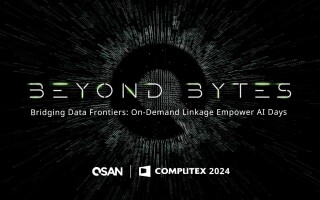Celebrate World Backup Day: Embed Resilience in Your Own Digital Future
March 28, 2024
Blog

In high-stakes industries such as automotive, industrial, healthcare and tech, having an IT backup strategy isn’t just advisable, it’s essential.
As professionals in the industry, we know the importance of data. It’s the lifeblood of a business. It is the most valuable resource that fuels deeper insight and drives decisions. It’s the new oil of the digital economy. And the metaphors go on.
Yet, as we scale up to meet the demands of IoT, AI, and machine learning, the challenge of managing vast amounts of data—both structured and unstructured—grows exponentially. The need for scalable, efficient and secure storage solutions is more pressing than ever. From the cloud to storage servers, NAS and tape, the options are endless and foundational.
But let's get personal for a moment. How many of us, especially those leading IT at home, truly follow through with the backup practices we champion at work? If you've yet to lose data, consider yourself fortunate. Many only recognize the value of regular backups after a loss.
Unfortunately, the first thing that comes to mind when people lose data is why didn’t I back up! (There’s probably another expletive that comes first but let’s go with this.)
In a world increasingly reliant on technology for everything from work to socializing, protecting digital content such as photos, videos, documents, and emails is so important. Given that an unimaginable amount of data is generated daily, data protection and backup is crucial. This is because the risk of data loss is very real and can occur due to hardware failure, software corruption, cyberattacks, accidental deletion, and natural disasters.
Consider these statistics from the World Backup Day website:
- 21% of people have never made a backup.
- 29% of data loss cases are caused by accident.
- 113 phones are lost or stolen every minute.
- 30% of all computers are already infected with malware.
Data loss can be sudden, and, without a backup, data may be irretrievable. No matter what the cause, it can be truly devastating for individuals and businesses alike to permanently lose precious content that simply can't be replaced.
March 31st is now recognized as World Backup Day - as a reminder to check that your data is backed up and protected.
Following the 3-2-1 Rule is a simple way to ensure that you are keeping your most important asset safe and out of harm's way.
- Have THREE copies of data. One is a primary backup and two are copies.
- Save copies of backups on TWO different types of media or devices.
- ONE backup copy should be kept off site in case of disaster.
As you review your data backup strategies there are a few considerations to keep in mind.
Backing up data is easier than you think
Storage technology has come a long way, and there are now a multitude of effective and easy to use backup solutions available. For example, external desktop or portable drives are highly effective where users can back up laptop data prior to or during a business trip to provide added protection if equipment is lost, stolen, or damaged.
Another popular option is the cloud. While ubiquitous with many online backup cloud providers available, the ‘3-2-1 Rule’ should still apply. There are also several factors to consider when selecting the provider that’s right for you. Important considerations that will affect the cost of the service include security features, data encryption, backup frequency, disaster recovery, data accessibility, and scalability to name a few.
An on-site network attached storage (NAS) solution is also a great way to protect data. A NAS device allows you to share files and data between computers. And with capacities now up to 24TB*, like with the new WD Red Pro HDD, you can also store vast amounts of large files such as videos and photos from a central device. Some NAS setups have the ability to schedule automated backups, so you don’t have to worry about manually backing up your data.
Choosing the right solution
Fortunately, with advancements of flash and HDD storage technologies, you can rest assured that there are plenty of options available to cost effectively store and back up data as your needs grow.
Every person has different data backup needs. Here is a checklist of features and functions to consider as well as some questions to ask that will help you select the right solution to protect your data:
- Simple installation: Is the solution easy to install on all of the computers in your business or home office.
- Easy use day-after-day: Does the software run daily backups automatically and unattended? Is it easy to use?
- Fits your home or office setup: Do you need to help protect data on a server, PCs on a network or both? Do you need to share storage over the network?
- Complete backup solution: Does the backup solution or the backup software provide a complete backup of the entire computer including operating system (OS), settings, Windows registry, system / software / driver updates, and all data?
- Scalable capacity: Does the solution give you room to grow next quarter or next year, as your digital footprint expands?
- Level of protection: Does it support RAID data protection options or give you the ability to rotate copies into a fireproof safe or offsite storage location?
- Reputation: Who produces the solution? Do they have a strong reputation for having reliable products?
- Value: Is the solution comparable in cost to other backup systems that offer the same level of features?
Don’t delay. You must make a conscious effort to protect your digital footprint — and that starts with backing it up. With the right approach, protecting your data is as simple as 3-2-1.
*1TB = 1 trillion bytes. Actual user capacity may be less depending on operating environment.





